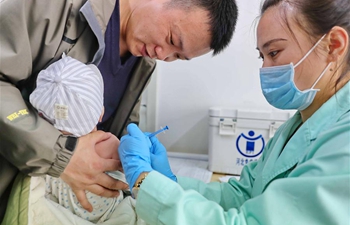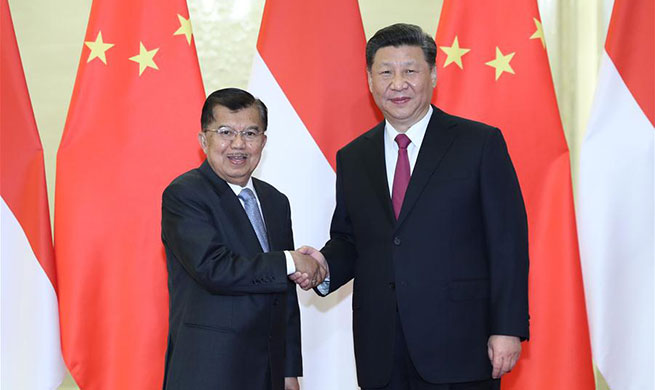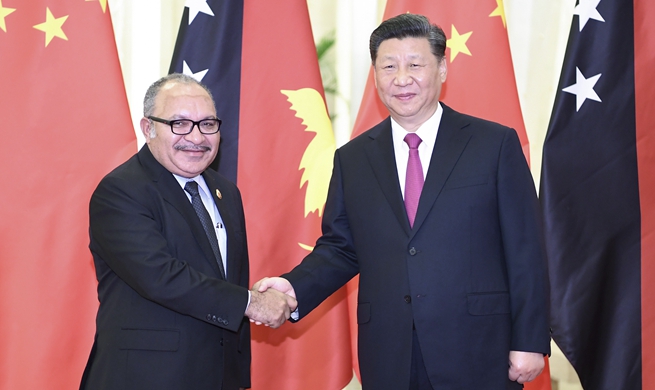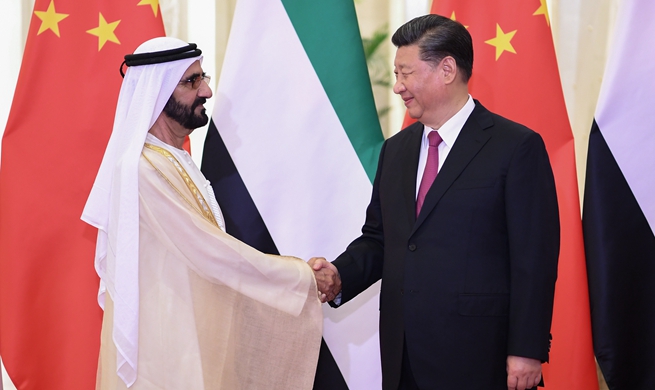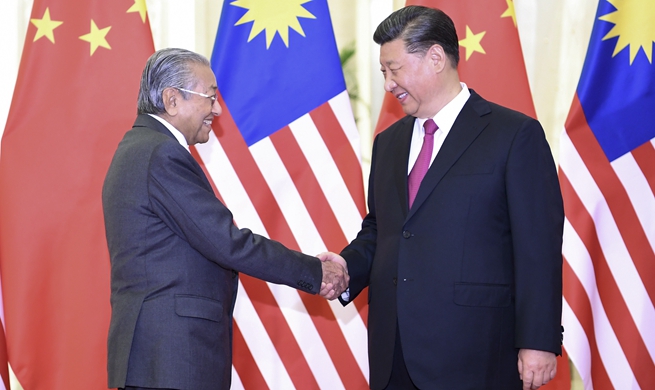BEIJING, April 25 (Xinhua) -- The central bank's latest liquidity injection, via a recently introduced tool, demonstrated China's resolve to offer targeted monetary support for the real economy rather than adopt a scattergun approach, analysts said.
The People's Bank of China on Wednesday injected 267.4 billion yuan (39.8 billion U.S. dollars) of funds into the market via the targeted medium-term lending facility (TMLF) to maintain liquidity.
The funds have a maximum maturity of three years and an annual interest rate of 3.15 percent, 15 basis points lower than the existing medium-term lending facility.
Large commercial banks, joint-stock banks and major city commercial banks that lend heavily to the real economy and meet macro prudent requirements can apply for the TMLF, according to the PBOC.
The TMLF tool was introduced in December 2018 to encourage loans to small and private businesses. This is the second time the tool was used since the beginning of this year.
Wang Qing, a chief macroeconomy analyst with Golden Credit Rating International, believes the move shows that the central bank is revving up targeted support for underfinanced private and small businesses through a more structural monetary policy, which he compares to "drip irrigation."
"Policymakers may have seen alleviated downward pressure in the economy and reduction in the necessity for wholesale quantitative easing and will put more focus on striking balance between maintaining growth, improving weak links and preventing risks," Wang said.
The Chinese economy got off to a good start in 2019, expanding by a better-than-expected 6.4 percent year on year in the first quarter, official data showed.
Industrial output, retail sales and fixed-asset investment all saw faster growth in Q1 than the January-February period. The surveyed unemployment rate in urban areas edged down in March from the previous month.
"The economic fundamentals have improved gradually, and market confidence is picking up," said Wang Youxin, a researcher with the international financial research institute under the Bank of China.
With relatively abundant domestic liquidity, lowering market interest rates and lower possibilities of further rate hikes in the United States, it seems unnecessary to boost short-term liquidity and sow the seeds of asset bubbles, he said.
Despite more positive signs in the economy, the slowing world economy, increasing corporate costs and declining profitability in the real economy still present challenges for the Chinese economy, according to Mao Shengyong, spokesperson of the National Bureau of Statistics.
Authorities have taken a more nuanced approach to monetary and fiscal support, with targeted steps to reduce the financing costs of small and private businesses, expand effective investment and encourage domestic consumption.
In monetary policy, the central bank is becoming more neutral and has no intention of adopting short-term stimulus, according to Wang Youxin.
"Compared with other tools like reserve requirement ratio cuts and reverse repos, TMLF operations can ensure that funds unleashed will flow to the real economy where they are most needed, without causing excessive disruptions to the financial market," he noted.
He expected the central bank to use more long-term and structural monetary policy tools in the future to keep liquidity stable.




